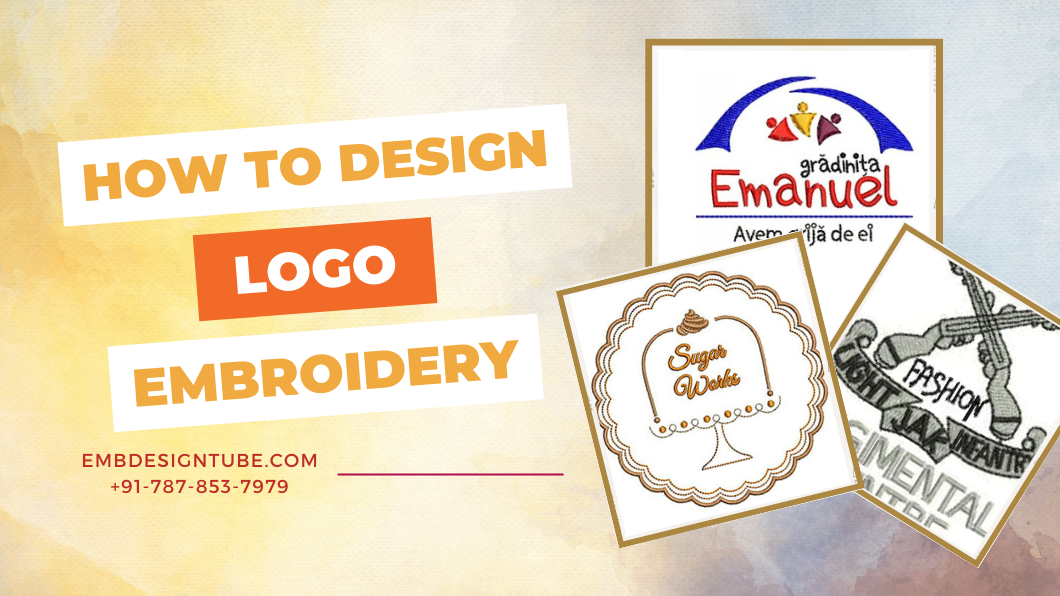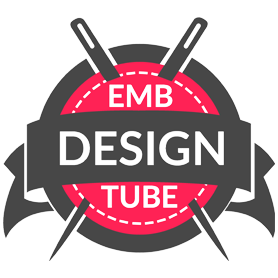
To learn how to design a logo for embroidery, you should start by reviewing the basics. Several important aspects to consider when designing a logo include the color palette, thin lines, blends of colors, and fabric.
Read through the article to learn more. Once you've finished reviewing these details, you can proceed to the next step: creating the embroidery file. Follow the tips to get you started:
Color gradients
When creating a logo for embroidery, you need to consider a few things. For one thing, the embroidery process is not a good way to use small text. Thin text, even in the best case, is difficult to reproduce on a larger scale. Another issue is that light colors often create problems with fine details. If you plan to embroider a lighthouse, for example, you should use dark-colored threads in the design to reproduce the details in the lighthouse beam.
Another reason you should not use color gradients in your logo is because they do not translate well to high-end environments. A slope can look like a banded pattern depending on the print type. However, you can use Adobe's techniques to eliminate design gradient issues.
However, it's best to use color gradients with caution. As with any graphic design, angles should have a meaning and not be arbitrary.
Thin lines
Another most important aspect to remember when designing a logo for embroidery is that thin lines are essential. Creating a logo with thick lines would be impossible, making the design challenge to recognize and reproduce.
Fortunately, several tips for designing logos for embroidery can help you create an embroidery pattern that will look good on any garment. First, make sure your embroidery design is clean & straightforward. Avoid using excessive details such as complicated font or additional stitches.
Secondly, make sure that the text is more significant than 1/4 inch. When designing a logo for embroidery, you must avoid using small text or very tight spacing between the letters. A thin line will sink into the fabric's texture and pile, making it impossible to read.
Another essential rule is to use a standard thread thickness of 0.4mm. You can't use tiny strokes to create fine lines, and repeating colors will break the thread.
Blended colors
One of the most challenging aspects of commercial embroidery is creating subtle shading. Many embroiderers believed digitized designs were merely cartoons, but new technology allows for more realistic blends of colors.
This article will explain how to make your logo look more natural using blended colors. You can start by choosing a design that uses spectrally friendly colors. Once you have selected a color palette, choose the blending method that best suits the design.
A professionally designed logo usually features transitions and blended colors. However, it is much more challenging to achieve this look in a logo with a small area. While printing uses pixels on a computer screen, embroidery requires thread segments to be adjusted to create a consistent result.
It is essential to follow the guidelines for color choice so that the final result looks professional. Blended colors can add the finishing touch to a logo, but you should be wary of using too many shades and tints in a small area.
Fabric
Designing a logo for embroidery is complex, and it requires special considerations for both the artist and the digitizer. To achieve the best results, a logo should be simple and recognizable, attractive, and evoke a feeling of quality and prestige. To make this logo designing process easier, here are some tips. Embroidery digitizing requires an experienced digitizer with knowledge of the fabric and embroidery threads.
The size of the embroidery design will determine the amount of detail needed. It is best to avoid making the lettering too acceptable, especially when using light colors. In addition, embroidery designs should not be too small, as they can become puckered after washing.
The embroidery company should also select the proper threading and backing to ensure a long-lasting logo. If your emb logo is too small, it may not be easy to reproduce correctly.
Trim
When designing a logo for embroidery, you must remember that color selection is as important as fabric type and stitching method. The colors you choose will determine the degree of accuracy of the digitized logo, so you must carefully match thread colors.
For embroidery, a stipple-style pattern will help you achieve the best results. Here are some tips for making your embroidery logo stand out. All you need to do is follow the steps below to create your logo look stunning.
First, you should upload an image of your logo to your embroidery digitizing software. Once you have uploaded your logo, select the appropriate file format for the embroidery software, as many embroidery machine supports DST file format, while few machine supports EXP or HUS format
Make sure that your file is large enough to prevent pixelation. If you are unsure how large your image should be, use a program that offers bigger images. These will not be affected by pixelation and will be of higher resolution.
If you don’t know how to make use of all these things together, you can alternatively hire our customized embroidery digitizing service and we will take care of everything for you at the most competitive rates in the market.
